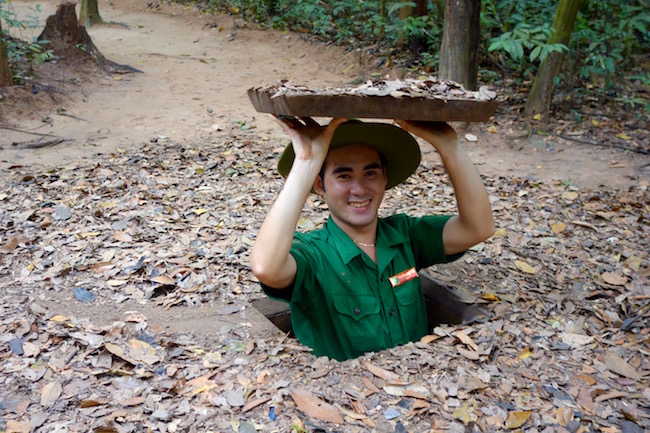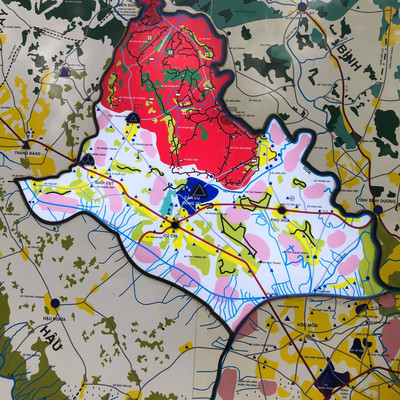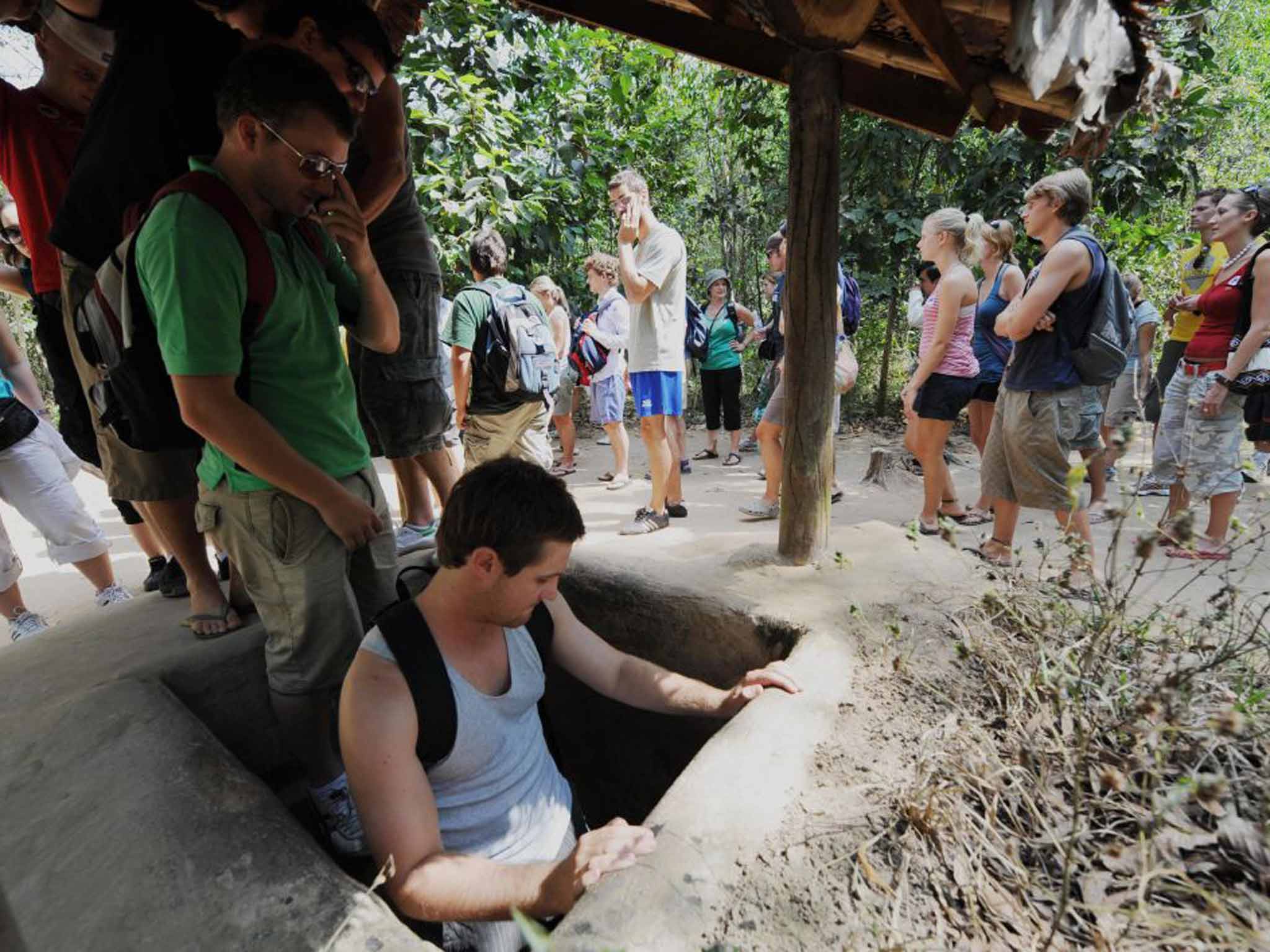Table of Contents
Nestled within the lush landscapes of Southern Vietnam, approximately 70 kilometers northwest of Ho Chi Minh City, lies a remarkable historical site that has captured the imagination of countless visitors worldwide: where is Cu Chi Tunnels located. These intricate underground tunnels, stretching for a vast network of over 250 kilometers, played a pivotal role in the infamous Vietnam War, serving as a vital stronghold for the Vietnamese resistance forces. Delving into the location of the Cu Chi Tunnels is a journey that not only unravels the complexities of wartime strategy but also unravels the enduring spirit of the Vietnamese people and their inexhaustible resilience.
Where is Cu Chi Tunnels located

To fully appreciate the intricacies of where is Cu Chi Tunnels located, it is essential to understand their strategic location. The tunnels are situated in the Cu Chi District, which is part of the greater Ho Chi Minh City metropolitan area. The district is located in the southeastern region of Vietnam, bordering Cambodia to the west and the South China Sea to the east. The Cu Chi Tunnels are specifically located in the Ben Duoc and Ben Dinh villages, which are about 20 kilometers apart.
Historical Significance of the Location
The location of the Cu Chi Tunnels holds significant historical importance, particularly during the Vietnam War. The tunnels were strategically positioned near the Ho Chi Minh Trail, a crucial supply route for the North Vietnamese Army. This made the tunnels an ideal base for the Viet Cong, the guerrilla fighters who fought against the American and South Vietnamese forces. The proximity to the Saigon River also provided easy access to water for the villagers living in the tunnels.
The location of where is Cu Chi Tunnels located also played a crucial role in the success of the Vietnamese resistance. The dense vegetation and swampy terrain of the Cu Chi District provided natural camouflage and made it difficult for the enemy forces to detect the tunnels. This, combined with the intricate network of tunnels and booby traps, gave the Viet Cong a strategic advantage in their fight against the better-equipped American soldiers.
Finding Cu Chi Tunnels

Discovering the location of where is Cu Chi Tunnels located was not an easy feat. The tunnels were meticulously constructed by the skilled hands of the local villagers, who, armed with rudimentary tools and indomitable determination, carved out a sprawling network of underground passages, bunkers, living quarters, and hospitals. This subterranean labyrinth became an integral part of the Vietnamese resistance strategy, providing refuge, logistical support, and strategic advantage to the guerrillas.
A Hidden Labyrinth
The where is Cu Chi Tunnels located remained a well-kept secret for many years, even during the height of the Vietnam War. The tunnels were carefully concealed under trapdoors, hidden entrances, and camouflaged openings, making them almost impossible to detect. The Viet Cong also used various diversion tactics, such as fake termite mounds and spider holes, to confuse and mislead the enemy.
It wasn’t until 1965 when American soldiers discovered the existence of the tunnels during a routine patrol. Even then, it took several years for the US military to fully understand the extent and complexity of the tunnel network. They eventually launched a massive bombing campaign to destroy the tunnels, but the Viet Cong continuously repaired and expanded them, rendering the bombings ineffective.
Uncovering the Location
After the war ended in 1975, the Vietnamese government opened up the Cu Chi Tunnels to the public as a historical site. Today, visitors can explore a small section of the tunnels, which have been widened and reinforced for safety purposes. The entrance to the tunnels is located near the Ben Dinh village, where visitors can also see various displays and exhibits showcasing the history and significance of the tunnels.
The where is Cu Chi Tunnels located have become a popular tourist destination, attracting thousands of visitors each year. The location has been transformed into a living museum, where visitors can experience firsthand the conditions and challenges faced by the Vietnamese resistance fighters during the war. It is a testament to the resilience and determination of the Vietnamese people and their unwavering spirit in the face of adversity.
Cu Chi Tunnels: A Guide to Location

Visiting the Cu Chi Tunnels is an immersive experience that takes you on a journey through history and resilience. To fully appreciate the location and its significance, it is essential to plan your trip carefully. Here is a guide to help you navigate your way to the famous Cu Chi Tunnels.
The most convenient way to reach the Cu Chi Tunnels is by taking a guided tour from Ho Chi Minh City. Many tour companies offer half-day or full-day tours to the tunnels, which include transportation, entrance fees, and a knowledgeable guide. These tours often include stops at other historical sites, such as the War Remnants Museum and the Reunification Palace, providing a well-rounded understanding of the Vietnam War.
If you prefer to travel independently, you can take a public bus or taxi from Ho Chi Minh City to the Cu Chi District. From there, you can hire a motorbike or bicycle to reach the tunnels, which are about 20 kilometers away. However, be prepared for heavy traffic and chaotic roads, especially during peak tourist season.
Locating the Famous Cu Chi Tunnels
Once you arrive at the where is Cu Chi Tunnels located, you will need to purchase an entrance ticket to access the site. The ticket includes a guided tour of the tunnels, which lasts for approximately one hour. The tour takes you through a section of the tunnels, demonstrating how the Viet Cong lived and fought during the war. You will also see various booby traps, weapons, and other artifacts used by the resistance fighters.
After the tour, you can explore the surrounding area, which includes a shooting range where visitors can fire weapons used during the war. There is also a souvenir shop and a restaurant serving traditional Vietnamese dishes. The entire experience takes about 2-3 hours, depending on your pace and interest in the exhibits.
Cu Chi Tunnels: Where Are They Located?

The exact location of the Cu Chi Tunnels is at coordinates 11°03’N 106°30’E. However, if you are using a GPS device or map application, it is best to search for “Ben Dinh Village” or “Cu Chi Tunnels” to get accurate directions. The tunnels are located approximately 70 kilometers from Ho Chi Minh City, and the journey takes about 1.5-2 hours by car.
If you are planning to visit the where is Cu Chi Tunnels located, it is advisable to do so during the dry season, which runs from December to April. The tunnels can be quite muddy and slippery during the rainy season, making it challenging to navigate through them. It is also recommended to wear comfortable shoes and bring insect repellent, as the tunnels can be hot and humid with mosquitoes and other insects.
Conclusion

The where is Cu Chi Tunnels located are not just a historical site; they are a symbol of the resilience and determination of the Vietnamese people. The location holds significant historical importance, and exploring it provides a deeper understanding of the complexities of the Vietnam War. From its strategic position to its hidden labyrinth, the Cu Chi Tunnels continue to captivate and educate visitors from all over the world. So, if you ever find yourself in Southern Vietnam, make sure to add this remarkable site to your itinerary.